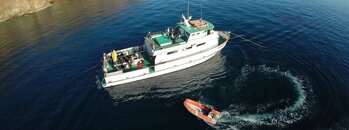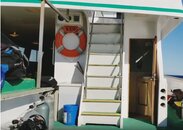- Messages
- 21,489
- Reaction score
- 21,744
- Location
- Philadelphia and Boynton Beach
- # of dives
- 2500 - 4999
As per my post in the other thread, Nautilus Explorer, main stairway exits to dive deck, emergency hatch, at opposite end of the hallway, to the dining room.I think you will not find any liveaboard that meets your needs, then. I’ve been on 25, usually as captain or engineer, and I have never seen escape trunks that open to more than one space, because usually the space they open to is the salon.
Unless it was absolutely impossible, though my room was next to the emergency hatch, I had planned to take the stairs to the dive deck.





